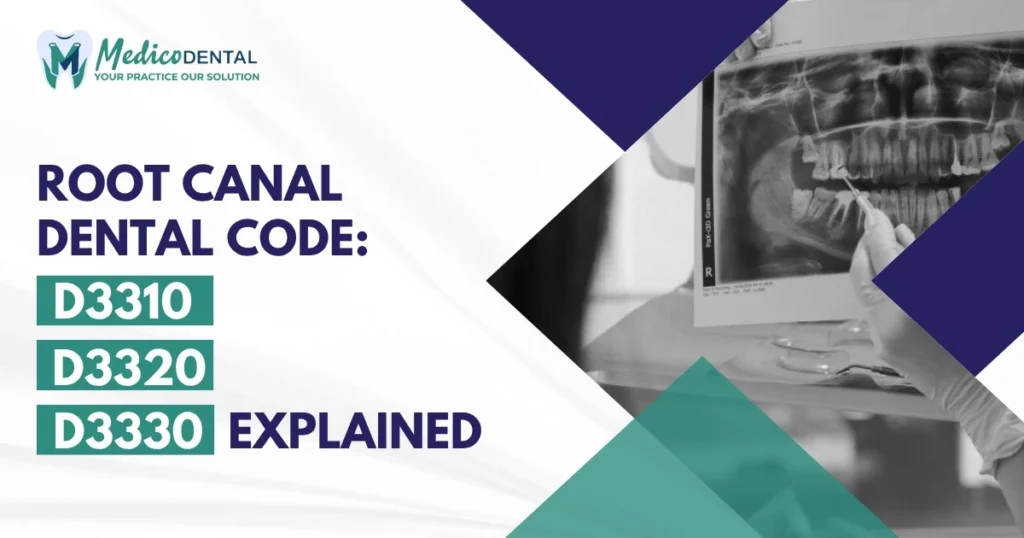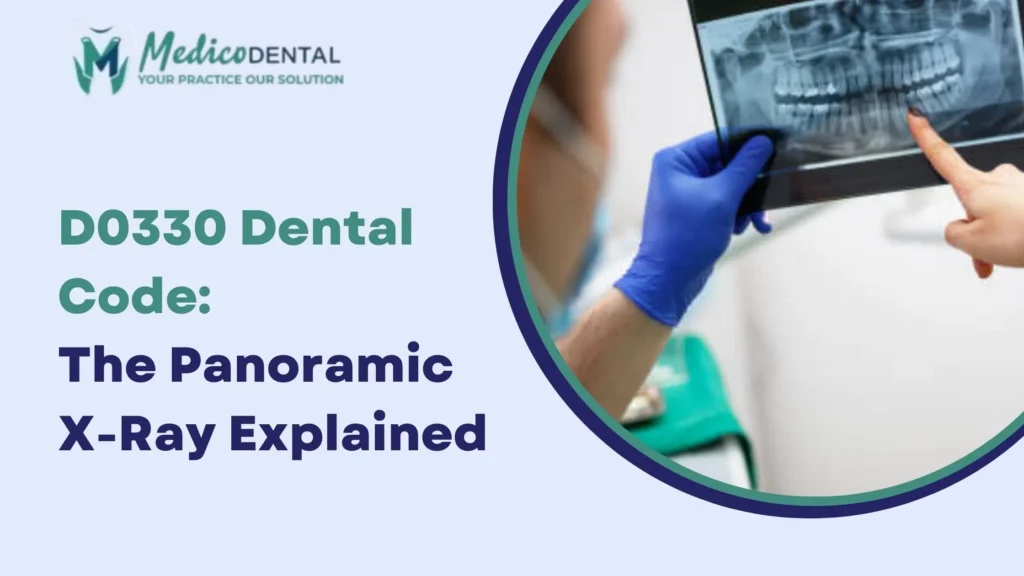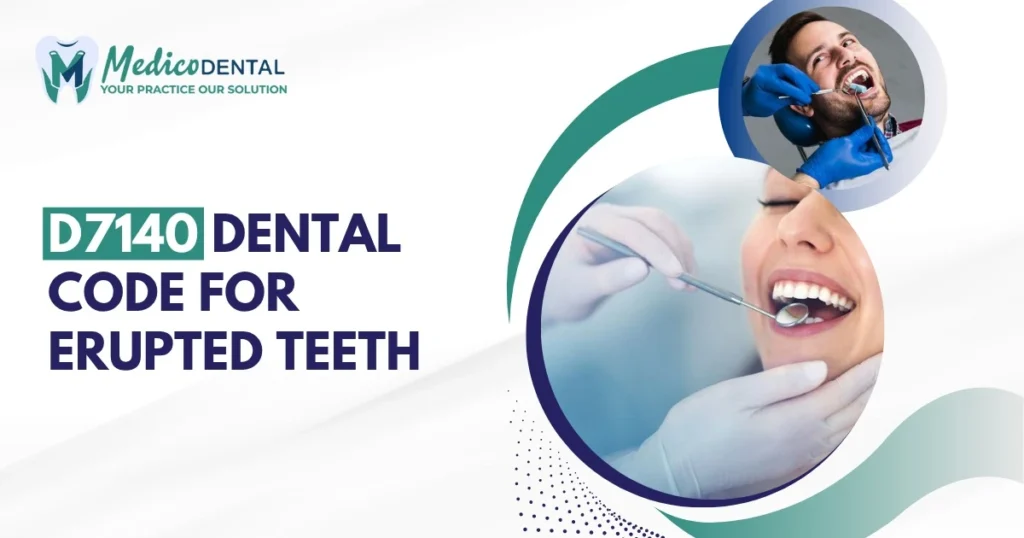Root canal treatment is one of the most common and vital procedures in restorative dentistry. To ensure accurate billing and smooth insurance processing, understanding the root canal dental code is essential for both dental professionals and billing specialists. This guide explains the procedure, outlines each relevant CDT code, and clarifies what’s included and excluded in root canal billing to help your practice stay compliant and profitable.
What Is a Root Canal Procedure?
A root canal procedure is a dental treatment designed to save a tooth that has been severely damaged, decayed, or infected. Instead of removing the tooth, the dentist removes the infected pulp, cleans and disinfects the inside of the tooth, and seals it to prevent future infections. This procedure helps patients retain their natural teeth and maintain proper oral function while eliminating pain and infection.
Purpose and Importance of Root Canal Therapy
The primary goal of root canal therapy is to preserve the patient’s natural tooth structure. When bacteria invade the pulp tissue inside a tooth, it causes inflammation, pain, and potential abscess formation. A root canal removes the infected tissue and seals the canal, preventing the need for extraction. This not only restores oral health but also maintains the patient’s ability to chew and speak normally. Additionally, successful root canal therapy can prevent bone loss in the jaw and avoid costly restorative procedures in the future.
Common Reasons for Root Canal Treatment
Root canals are often required due to severe tooth decay, cracked or chipped teeth, or trauma that exposes the pulp. In some cases, repeated dental procedures on the same tooth can also lead to pulp damage. Patients typically seek treatment when they experience symptoms such as prolonged tooth sensitivity, swelling, or severe pain. Identifying these issues early helps ensure that the dentist can treat the infection before it spreads further.
Root Canal Dental Code Overview
Dental coding is a crucial part of practice management and insurance billing. The root canal dental code helps providers classify endodontic procedures accurately, ensuring proper documentation and timely reimbursement. Each code corresponds to the specific type of tooth and the complexity of the treatment involved.
What Does the Root Canal Dental Code Represent?
The root canal dental codes fall under the ADA’s Current Dental Terminology (CDT) system, which is used by dental professionals and insurance carriers to identify procedures consistently. Each code such as D3310, D3320, or D3330 represents a specific type of root canal therapy depending on whether the treated tooth is anterior, premolar, or molar. Using the correct code ensures accurate claim submission and reduces the likelihood of payment denials.
ADA CDT Coding System for Endodontic Procedures
The ADA CDT coding system standardizes how dental procedures are reported nationwide. For root canal treatments, the CDT codes provide details about the procedure performed, the tooth type, and any follow up actions. This helps streamline communication between dental offices and insurers. Endodontic codes (D3000–D3999) cover all root canal related services, making it easier for billing teams to track procedures and verify coverage.
Breakdown of Common Root Canal Dental Codes
Root canal procedures are categorized by the type of tooth being treated. Here’s a breakdown of the most common root canal dental codes used in endodontic billing:
D3310 Endodontic Therapy, Anterior Tooth
Code D3310 refers to endodontic therapy performed on anterior teeth typically the front teeth, including incisors and canines. These teeth usually have a single canal, which makes the procedure simpler and less time consuming compared to molars. This code covers cleaning, shaping, and filling of the entire root canal system in an anterior tooth.
D3320 Endodontic Therapy, Premolar Tooth
The D3320 code applies to endodontic therapy on premolar teeth, which often have one or two canals. The procedure requires slightly more complexity than an anterior tooth due to additional canal structures. This code ensures accurate billing when treating bicuspids that require root canal therapy.
D3330 Endodontic Therapy, Molar Tooth
Code D3330 is used for root canal therapy on molars. Molar teeth typically have three or more canals, making them the most complex type of endodontic treatment. This code covers the cleaning, shaping, and obturation of all canals within the molar tooth. Due to the intricate anatomy, this procedure generally requires more time and expertise, which is reflected in the coding and billing process.
D3331 Treatment of Root Canal Obstruction
D3331 represents the treatment of an obstruction within a root canal system. These obstructions may occur due to calcified canals, broken instruments, or other blockages that prevent the dentist from completing the procedure. This code is used in conjunction with other root canal codes when an obstruction must be addressed before the therapy can continue.
D3332 Incomplete Endodontic Therapy
The D3332 code applies when a root canal treatment cannot be completed. This could be due to complex anatomy, patient discomfort, or unexpected complications during the procedure. It allows dentists to document partial work performed while indicating that full therapy was not achieved.
D3333 Internal Root Repair of Perforation
Code D3333 is used when a dentist repairs an internal perforation within the root canal. This situation may arise during treatment or from previous dental work. The code represents the repair of such perforations using biocompatible materials to restore the integrity of the tooth’s structure and prevent further damage.
What’s Not Included in Root Canal Dental Codes
While the root canal dental codes cover the cleaning, shaping, and filling of canals, they do not include procedures performed after the canal is sealed. Post treatment restorative procedures such as crowns or core buildups are billed separately using their own CDT codes. Understanding these distinctions ensures that claims are both accurate and complete.
Crown Placement After Root Canal
After a root canal, most teeth especially molars and premolars require a crown for protection and durability. Crowns help prevent fractures and restore the tooth’s function. However, the cost and code for crown placement are not part of the root canal dental codes. The appropriate CDT codes for crowns, such as D2740 for a porcelain crown, should be used separately.
Core Buildup and Post Procedures
Sometimes, before placing a crown, the dentist performs a core buildup to strengthen the remaining tooth structure or inserts a post to provide additional support. These procedures are coded separately, often under codes like D2950 (core buildup, including any pins) or D2952 (post and core).
These additional codes ensure that all parts of the restorative process are properly documented and reimbursed.
Importance of Accurate Root Canal Coding
Accurate coding is the foundation of efficient dental billing and reimbursement. When it comes to endodontic procedures, even a small coding error can lead to claim rejections, delayed payments, or compliance issues. Understanding and applying the correct root canal dental code ensures that the procedure is properly documented, billed, and reimbursed according to insurance standards. Accuracy in coding not only reflects the professionalism of a dental practice but also helps maintain financial stability and patient trust.
How Correct Coding Affects Claim Approval
Each insurance company relies heavily on CDT codes to determine reimbursement eligibility. When the right root canal dental code is used, it communicates the exact service provided, reducing confusion during the claim review process. For instance, if a dentist performs a molar root canal but submits the code for an anterior tooth (D3310 instead of D3330), the insurance company may deny or underpay the claim. Correct coding ensures clarity and prevents misinterpretation by payers. Moreover, accurate documentation that supports the chosen code such as treatment notes, X rays, and patient records further strengthens the claim and increases the likelihood of first pass approval.
Avoiding Denials and Delays in Reimbursement
Denied or delayed claims are often the result of coding mismatches or incomplete documentation. Using incorrect codes, omitting tooth numbers, or failing to attach required clinical notes can cause unnecessary setbacks in the reimbursement process. By applying the right root canal dental code and ensuring all supporting information is submitted, dental offices can minimize the chances of claim rejection. This not only accelerates payment cycles but also reduces administrative workload. In addition, maintaining a coding audit system helps detect recurring errors and keeps the practice compliant with insurance guidelines and ADA standards.
Tips for Maximizing Reimbursement Using the Right Root Canal Dental Code
Maximizing reimbursement isn’t just about coding correctly it’s about managing the entire billing process efficiently. From documentation to communication, every step plays a role in ensuring that dental practices get paid fully and on time for their work.
Documentation Best Practices
Accurate and thorough documentation supports every code submitted for reimbursement. For root canal treatments, detailed clinical notes should include tooth number, diagnosis, treatment steps, materials used, and any complications encountered during the procedure. Radiographic evidence before and after treatment provides additional proof of service completion.
Two essential documentation tips include:
- Always verify that the clinical documentation matches the root canal dental code used for billing.
- Retain all supporting images and notes for at least the minimum period required by your state or insurer to avoid audit complications later.
Proper documentation not only helps justify the code but also serves as a legal and professional safeguard in case of disputes or audits.
Coordination Between Dentist and Billing Team
Smooth coordination between the dentist and the billing team is critical for efficient reimbursement. The dentist must accurately record the procedure details, including the type of tooth and any additional treatments, while the billing team ensures that the appropriate CDT code is applied. A breakdown in communication can easily lead to claim rejections. For example, if the dentist performs a molar root canal but doesn’t specify it in the clinical notes, the billing team might mistakenly use a premolar code, resulting in reduced payment. Regular team training sessions on updated CDT codes and billing rules can help prevent such errors and improve workflow efficiency.
Common Mistakes to Avoid with Root Canal Dental Codes
Even experienced dental professionals can make coding errors that impact reimbursement. Knowing the most common mistakes can help avoid costly delays and rejections.
Incorrect Tooth Type Coding
One of the most frequent errors in root canal billing is applying the wrong code for the tooth type. Since different teeth (anterior, premolar, molar) have unique structures and levels of complexity, they are assigned separate CDT codes D3310, D3320, and D3330, respectively. Confusing these codes can lead to underpayment or complete claim denial. It’s essential for both the clinical and billing teams to verify the correct tooth type before submitting the claim. Using digital charting systems that automatically link tooth type to its corresponding code can help minimize human error.
Missing Supplementary Procedure Codes
Another common mistake is failing to include supplementary procedure codes that often accompany root canal therapy. While the root canal dental code covers the cleaning and filling of the canal system, it does not include additional restorative procedures such as posts, cores, or crowns. Omitting these codes means the practice loses reimbursement for extra services rendered. To prevent this, dentists should clearly note all procedures performed during and after the root canal, and billing staff should cross check the documentation to ensure no related code is left out.
Conclusion
Accurate coding is more than a billing requirement it’s a reflection of a dental practice’s professionalism, organization, and commitment to quality patient care. Mastering the root canal dental code ensures that every service is properly documented, billed, and reimbursed, preventing financial losses and improving efficiency across the practice.
Streamlining endodontic billing begins with understanding the structure and purpose of each CDT code. By applying the correct root canal dental code, dental teams can minimize claim denials, speed up reimbursement, and maintain accurate financial reporting. Practices that integrate modern billing software, coding audits, and consistent staff training often experience a noticeable improvement in cash flow and operational performance.
Accurate coding doesn’t just protect revenue it enhances patient care. When dental professionals focus on compliance and precision, they create an environment of trust and transparency. Patients benefit from clear treatment plans, predictable costs, and confidence in their provider’s integrity. In the long run, mastering root canal coding supports not only financial stability but also the overall reputation and success of the dental practice.
FAQs
What is the root canal dental code?
Ans. The root canal dental code identifies specific endodontic treatments based on the tooth type and procedure performed.
Why is accurate root canal coding important?
Ans. Accurate coding ensures correct claim submission, timely reimbursement, and compliance with dental insurance standards.
What are the main root canal dental codes?
Ans. The primary codes include D3310 for anterior, D3320 for premolar, and D3330 for molar root canal therapy.
Does the root canal code include crown placement?
Ans. No, crown placement is billed separately using its own CDT code.
What causes claim denials for root canal procedures?
Ans. Common causes include incorrect tooth coding, missing documentation, or omitted supplementary procedure codes.



